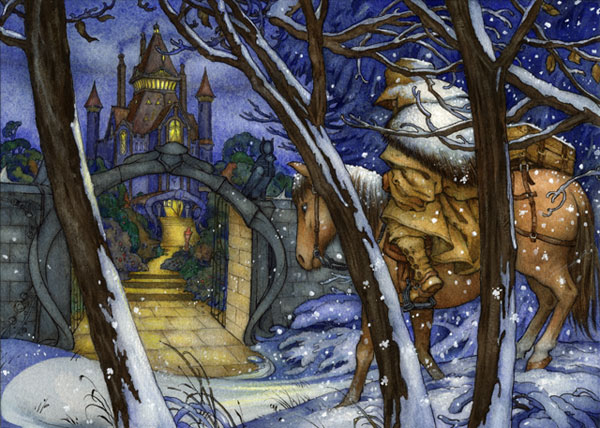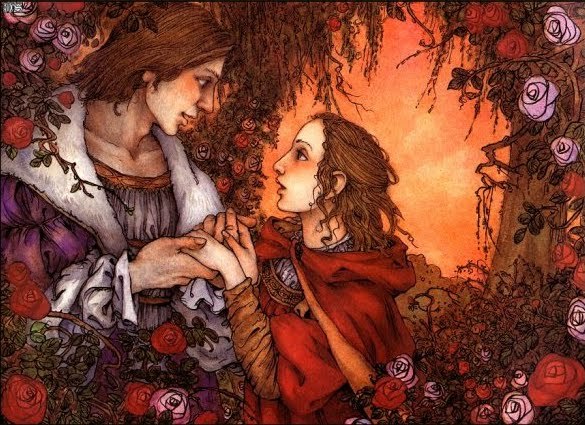I have long called the Eilenberg/Barrett Beauty and the Beast my favorite children's book version of the tale (from whence comes the title picture of this blog), although many other fairy tale enthusiasts claim the Marianna and Mercer Mayer version as their favorite. After reading what Jerry Griswold had to say about it in his The Meanings of Beauty and the Beast: A Handbook, I definitely have a greater appreciation for this book. Griswold's analysis made me go to my shelf, pull out my copy of the Mayer book, and pour over the pictures again; there's a lot going on that I never noticed on my own.
Mercer Mayer's illustrations accompany the text by Marianna Mayer. Many of the pictures emphasize one of the themes of the story: that of sight and looking beyond the surface. In most of the pictures (only a few are included in this post), notice the contrast between foreground and background. In doing so, he forces you to do one of the main messages of the story: to look beyond the surface; to go deeper.
Mayer also contrasts the scenes that take place in the "real world" with the fantasy world with the color scheme-scenes in the home with Beauty's family have a brownish tint, while the Beast's castle is characterized by blues.
Like Walter Crane, Mayer includes animal decorations in the Beast's castle-but many of these animals are mostly specifically Egyptian (notice the scarab jewelry Beauty is wearing below), "the appearance of these quasi-animal deities seem connected to the fact that Mayer's Beast is a...magician, but their anthropomorphic nature...is also intimately connected to issues of the story."
And hardly any illustrated version of Beauty and the Beast would be complete without roses, but Mayer uses even the amounts and colors of the roses to move the storyline along. When Beauty makes her request for the rose, roses appear subtly in the background and fabrics of the pictures. After Beauty's father picks the rose from the Beast's garden, the roses appear everywhere, and obviously.
Red roses tend to be associated with Beauty throughout, and white with the Beast. As the characters get to know each other, the red and white roses grow closer together. In the last picture, shown below, after the Beast's transformation, there appear pink roses for the first time.
Doesn't it make you want to get the book yourself? There's even more! I don't want to give away everything, so as to encourage readers to read the Griswold book and the Mayer picture book for yourselves, but see what you notice about eye contact (when/with whom eye contact is made in the pictures) and the positioning of Beauty to the Beast throughout the story and what it reveals. Also in Griswold's book: a possible Jungian interpretation based on the last picture. Share what you discover in the comments!






No comments:
Post a Comment